“Bring me your huddled masses”
exclaims the epithet on the Statue of Liberty
Paul Gardner explores Bartholdi’s great gift to America which brought freedom and hope for the hordes of immigrants arriving on their shores.
In the early days of the USA loyalty to one’s state often took precedence over loyalty to one’s country. A New Yorker or a Virginian would refer to his state as “my country”.
The Union was considered a voluntary contract entered into by independent sovereign states for as long as it served their policies to be so joined.
However a growing united Country needed workers with skills the only way to get them was to open its doors to immigrants from Europe and further afield.

IMAGE CREDIT: the square magazine digital collection
Bartholdi broached the idea of a massive statue and once its design was approved, the Union Franco-Américaine raised more than 1 million francs throughout France for its building. In 1879, Bartholdi was awarded design patent U.S. Patent D11,023 for the Statue of Liberty.
On 4 July 1880, the statue was formally delivered to the American minister in Paris, the event being celebrated by a great banquet. In October 1886, the structure was officially presented as the joint gift of the French and American people, and installed on Bedloe’s Island in New York Harbor.
It was rumored in France that the face of the Statue of Liberty was modeled after Bartholdi’s mother. The statue is 151 feet 1 inch, and the top of the torch is at an elevation of 305 feet 1 inch from mean low-water mark and was the largest work of its kind that had been completed up to that time.
Bartholdi was born in Colmar, France, 2 August 1834. He was born to a family of Alsatian Protestant heritage, with his family name adopted from Barthold. His parents were Jean Charles Bartholdi (1791–1836) and Augusta Charlotte Bartholdi (née Beysser; 1801–1891).
Frédéric Auguste Bartholdi was the youngest of their four children, and one of only two to survive infancy, along with the oldest brother, Jean-Charles, who became a lawyer and editor.
Bartholdi submitted a Good Samaritan-themed sculptural group to the Paris Salon of 1853. The statue was later recreated in bronze.
Within two years of his Salon debut, Bartholdi was commissioned by his hometown of Colmar to sculpt a bronze memorial of Jean Rapp, a Napoleonic General. In 1855 and 1856 Bartholdi traveled in Yemen and Egypt with companions such as Jean-Léon Gérôme and other “orientalist” painters. Probably the trip sparked Bartholdi’s interest in colossal sculpture.
Conflicts in Europe saw Bartholdi serving in the Franco-Prussian War of 1870 as a squadron leader of the National Guard, and as a liaison officer to Italian General Giuseppe Garibaldi, representing the French government and the Army of the Vosges.
As an officer, he took part in the defense of Colmar from Germany. With his region’s defeat, over the following years he constructed a number of monuments celebrating French heroism in the defence against Germany.

IMAGE CREDIT: the square magazine digital collection
In 1871, he made his first trip to the United States, where he pitched the idea of a massive statue gifted from the French to the Americans in honor of the centennial of American independence.
The idea, which had first been broached to him in 1865 by his friend Édouard René de Laboulaye, resulted in the Statue of Liberty in New York harbor. After years of work and fundraising, the statue was inaugurated in 1886.
During this period, Bartholdi also sculpted a number of monuments for American cities, such as the Bartholdi Fountain in Washington, DC.
In 1875, he joined the Freemasons Lodge Alsace-Lorraine in Paris. In 1876, Bartholdi was one of the French commissioners to the Philadelphia Centennial Exposition.
A member of the “Alsace-Lorraine” Lodge founded in Paris in 1782.As is apparent the link between Freemasons’ lodges and political life was heavily intertwined.
The lodge was formed in 1872 by expatriates refusing the German conquest. It was characterized by its prestigious recruitment and its patriotic orientation. It consisted mainly of politicians, engineers, intellectuals and artists.
Marc Labouret stated that this lodge will support active propaganda in favor of the secular education project. Among the famous members of this lodge, there is Jules Ferry, initiated on July 8, 1875.
The lodge mergesd with Science and Work in 1921. He was a member of the Lodge Alsace-Lorraine which was constituted at Paris in Sept. 1872 under the jurisdiction of the Grand Orient.
However locating this Lodge is proving allusive not being listed in the recognised [UGLE] family of Foreign Lodges. It was probably either under Grand Orient or a Grand Lodge without amity or expunged.
A contemporary of Bartholdi, a member of the same Lodge, was Jules F. C. Ferry (1832-1893) French lawyer, statesman and Premier of France, 1880-81, 1883-85. Born at Saint Die, in the Vosges in 1832, he was admitted to the bar in 1851.
Active in the establishment of the Republic of France, he turned to politics and opposed the party of Louis Napoleon. He gained fame for himself while serving as minister of public instruction.
Through his efforts, the rule of the Jesuits was broken in 1879, and in 1882, he was instrumental in the passage of a law which made primary education free, compulsory and non-clerical. While prime minister, he directed the acquisition of colonies in Africa and Asia.
At the siege of Paris during the Franco-Prussian War (1870-71), he was prefect of the besieged city and conceived the novel idea of getting the mail out by balloons, thus founding the world’s first “air mail.”.

IMAGE CREDIT: the square magazine digital collection
A prolific creator of statues, monuments, and portraits, Bartholdi exhibited at the Paris Salons until the year of his death in 1904. He also remained active with other mediums, including oil painting, watercolor, photography, and drawing. He received the rank of Commander of the Legion of Honor in 1886.
Bartholdi married Jeanne-Emile Baheux in 1876 in Providence, Rhode Island. In 1893, Bartholdi and his wife visited the 1893 World’s Columbian Exposition in Chicago, where his Washington and Lafayette sculptural group was exhibited.
Throughout his life Bartholdi maintained his childhood family home in Colmar; in 1922, it was made into the Musée Bartholdi. Bartholdi died of tuberculosis at age 70 in Paris in 1904.
Delays occurred by the Franco-Prussian War (1870-1871), in which Bartholdi served as a major of militia. In the war, Napoleon III was captured and deposed. Bartholdi’s home province of Alsace was lost to the Prussians, and a more liberal republic was installed in France.
As Bartholdi had been planning a trip to the United States, he and Laboulaye decided the time was right to discuss the idea with influential Americans. In June 1871, Bartholdi crossed the Atlantic, with letters of introduction signed by Laboulaye.
Arriving at New York Harbor, Bartholdi focused on Bedloe’s Island ( Liberty Island) “land common to all the states.” as a site for the statue, struck by the fact that vessels arriving in New York sailed past it.
He was delighted to learn that the island was owned by the United States government being ceded by the New York State Legislature in 1800 for harbour defence.
On his return to Paris in 1877, Bartholdi concentrated on completing the head, which was exhibited at the 1878 Paris World’s Fair. Fundraising continued, with models of the statue put on sale.
Tickets to view the construction activity at the Gaget, Gauthier & Co. workshop were also offered. The French government authorized a lottery; among the prizes were valuable silver plate and a terracotta model of the statue. By the end of 1879, about 250,000 francs had been raised.
The head and arm had been built with assistance from Viollet-le-Duc, who fell ill in 1879. He soon died, leaving no indication of how he intended to transition from the copper skin to his proposed masonry pier.
However, the following year, Bartholdi was able to obtain the services of the innovative designer and builder Gustave Eiffel. He and his structural engineer, Maurice Koechlin, decided to abandon the pier and instead build an iron truss tower. Eiffel opted not to use a completely rigid structure, which would force stresses to accumulate in the skin and lead eventually to cracking.
A secondary skeleton was attached to the center pylon, then, to enable the statue to move slightly in the winds of New York Harbor and as the metal expanded on hot summer days. In a labor-intensive process, each saddle had to be crafted individually.
To prevent galvanic corrosion between the copper skin and the iron support structure, Eiffel insulated the skin with asbestos impregnated with shellac.

IMAGE CREDIT: the square magazine digital collection
The curtain wall construction of Eiffel’s design in which the exterior of the structure is not load bearing but is instead supported by an interior framework an innovation. He included two interior spiral staircases, to make it easier for visitors to reach the observation point in the crown.
Access to an observation platform surrounding the torch was also provided, but the narrowness of the arm allowed for only a single ladder, 40 feet (12 m) long. As the pylon tower arose, Eiffel and Bartholdi coordinated their work carefully so that completed segments of skin would fit exactly.
He had originally expected to assemble the skin on-site as the masonry pier was built but instead build the statue in France and have it disassembled and transported to the United States for reassembly in place on Bedloe’s Island.
Bartholdi commissioned expertise from the best in Norwegian immigrant civil engineer Joachim Goschen Giæver who designed the structural framework for the Statue of Liberty. His work involved design computations, detailed fabrication and construction drawings, and oversight of construction.
In completing his engineering for the statue’s frame, Giæver also worked from drawings and sketches by Gustave Eiffel whose famous tower in Paris contemporaneous in construction. The skin was not, however, crafted in exact sequence from low to high; work proceeded on a number of segments simultaneously in a manner often confusing to visitors.
Some work of the fingers was made to Bartholdi’s exacting specifications by a coppersmith in the southern French town of Montauban.
By 1882, the statue was complete up to the waist and the French government had agreed to pay for its transport to New York. The statue remained intact in Paris awaiting sufficient progress on the pedestal; by January 1885, this had occurred and the statue was disassembled and crated for its ocean voyage.
Great difficulties in obtaining funds for the construction of the pedestal ensued. The Panic of 1873 had led to an economic depression that persisted through much of the decade.
There was criticism both of Bartholdi’s statue and of the fact that the gift required Americans to foot the bill for the pedestal. Faced with these criticisms, the American committees took little action for several years.

IMAGE CREDIT: the square magazine digital collection
The foundation of Bartholdi’s statue was to be laid inside Fort Wood, a disused army base on Bedloe’s Island constructed between 1807 and 1811 and since 1823 had rarely been used.
The fortifications of the structure were in the shape of an eleven-point star. The statue’s foundation and pedestal were aligned so that it would face southeast, greeting ships entering the harbor from the Atlantic Ocean.
In 1881, the New York committee commissioned Richard Morris Hunt to design the pedestal. Within months, Hunt submitted a detailed plan, indicating that he expected construction to take about nine months.
He proposed a pedestal 114 feet in height; faced with money problems, the committee reduced that to 89 feet.
Hunt’s pedestal design contains elements of classical architecture, including Doric portals, as well as some elements influenced by Aztec architecture. The large mass is fragmented with architectural detail, in order to focus attention on the statue.
A balcony was placed on each side, framed by pillars. Bartholdi placed an observation platform near the top of the pedestal. Significantly, “craggily evokes the power of an ancient Europe over which rises the dominating figure of the Statue of Liberty”.
Foundations began in 1883, and the pedestal’s cornerstone was laid in 1884. In Hunt’s original conception, the pedestal was to have been made of solid granite. Financial concerns again forced him to revise his plans; the final design called for poured concrete walls, up to 20 feet thick, faced with granite blocks.
This Stony Creek granite came from the Beattie Quarry in Branford, Connecticut. The concrete mass was the largest poured to that time followed in later years by such projects as the Boulder Dam.
Poet Emma Lazarus was asked to donate an original work. She initially declined, stating she could not write a poem about a statue. However, at the time, she was also involved in aiding refugees to New York who had fled anti-Semitic.
These refugees were forced to live in conditions that the wealthy Lazarus had never experienced. She saw a way to express her empathy for these refugees in terms of the statue.
The resulting sonnet, “The New Colossus”, including the lines “Give me your tired, your poor/Your huddled masses yearning to breathe free”, is uniquely identified with the Statue of Liberty in American culture and is inscribed on a plaque in its museum.

IMAGE CREDIT: the square magazine digital collection
Unfortunately fundraising lagged and Grover Cleveland, the governor of New York, vetoed a bill to provide $50,000 for the statue project in 1884.
An attempt the next year to get Congress to provide $100,000, sufficient to complete the project, also failed. The New York committee, with only $3,000 in the bank, suspended work on the pedestal.
Fortunately Joseph Pulitzer, publisher of the New York World, a New York newspaper, announced a drive to raise $100,000 (equivalent to $3,257,000 in 2022). Pulitzer pledged to print the name of every contributor, no matter how small the amount given.
The drive captured the imagination of New Yorkers, especially when Pulitzer began publishing the notes he received from contributors. One donor gave “five cents as a poor office boy’s mite toward the Pedestal Fund.”
Other small and large donations followed. In New York’s rival city of Brooklyn bars donated $15; other drinkers helped out through donation boxes in bars and saloons. As the donations flooded in, the committee resumed work on the pedestal. France raised about $250,000 to build the statue, while the United States had to raise up to $300,000 to build the pedestal.
Even with the success of the fund drive, the pedestal was not completed until April 1886. Immediately thereafter, reassembly of the statue began. Eiffel’s iron framework was anchored to steel I-beams within the concrete pedestal and assembled.
Once this was done, the sections of skin were carefully attached. Due to the width of the pedestal, it was not possible to erect scaffolding, and workers dangled from ropes while installing the skin sections.
Bartholdi had planned to put floodlights on the torch’s balcony to illuminate it, but the Army Corps of Engineers vetoed the proposal, fearing that ships’ pilots passing the statue would be blinded. Instead, Bartholdi cut portholes in the torch covered with gold leaf and placed the lights inside them.
A power plant was installed on the island to light the torch and for other electrical needs. After the skin was completed, landscape architect Frederick Law Olmsted, supervised a cleanup of Bedloe’s Island in anticipation of the dedication.

IMAGE CREDIT: the square magazine digital collection
With completion a ceremony of dedication was held on October 28, 1886. President Grover Cleveland, the former New York governor, presided over the event.
On the morning of the dedication, a parade was held in New York City; estimates of the number of people who watched it ranged from several hundred thousand to a million.
The route began at Madison Square, once the venue for the arm, and proceeded to the Battery at the southern tip of Manhattan by way of Fifth Avenue and Broadway.
As the parade passed the New York Stock Exchange, traders threw ticker tape from the windows, beginning the New York tradition of the ticker-tape parade.
The only women granted access were Bartholdi’s wife and de Lesseps’s granddaughter with officials stating that they feared women might be injured in the crush of people.
No members of the general public were permitted on the island during the ceremonies, which were reserved entirely for dignitaries.
The restriction offended area suffragists, who chartered a boat and got as close as they could to the island.
The group’s leaders made speeches applauding the embodiment of Liberty as a woman and advocating women’s right to vote. A scheduled fireworks display was postponed until November 1st because of poor weather.
Shortly after the dedication, The Cleveland Gazette, an African American newspaper, suggested that the statue’s torch not be lit until the United States became a free nation “in reality”:
“Liberty enlightening the world”.
It is fair to say that freedom and hope were realised for many of the immigrants, their families and offspring; some of course probably not.
Reverting to Denslow it can be gleaned from the names that over time at least some managed to achieve fame and fortune whilst also enjoying freemasonry, brotherhood and fraternity !
Je suis Liberté
Article by: Paul Gardner

Paul was Initiated into the Vale of Beck Lodge No 6283 (UGLE) in the Province of West Kent, England serving virtually continuously in Office and occupying the WM Chair on three occasions.
Paul joined Stability Lodge No 217 in 1997 (UGLE) and now resides with Kent Lodge No 15, (UGLE) the oldest Atholl Lodge with continuous working since 1752, where he was Secretary and now Assistant Secretary and archivist, having been WM in 2002.
In Holy Royal Arch he is active in No 15 Chapter and Treasurer of No 1601, which was the first UGLE Universities Scheme Chapter in 2015.
He was Secretary of the Association of Atholl Lodges which maintains the heritage of the remaining 124 lodges holding ‘Antients’ Warrants and has written a book on Laurence Dermott. - https://antients.org
Recent Articles: masonic history
 Protestantism and Masonic Influence in Brazil Discover the untold story of how Freemasons helped Southern Americans immigrate to Brazil post-Civil War, fostering economic and educational growth in Santa Bárbara d’Oeste and Americana. Learn about their pivotal role in establishing Protestant churches and ensuring the secularity of the Brazilian State amidst a Catholic-dominated society. |
 Explore the proper use of the sacred word in Brazilian Freemasonry through an analysis of Masonic literature and Bible translations. Uncover the errors in pronunciation and the need for corrections to maintain liturgical coherence in rituals. Discover insights on Masonry, rituals, and the Hebrew word Boaz. |
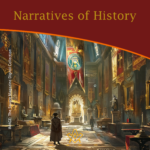 Narratives of History |
 A Very Royal Sesquicentenary |
 Unveiling the Enigma: Discover the Royal Society's Legacy and its Impact on Science. Delve into the fascinating history of the Royal Society, the prestigious UK academy shaping scientific progress since 1660. Explore its pivotal role in advancing knowledge, fostering collaboration, and unlocking the secrets of the universe. Prepare to be amazed! |
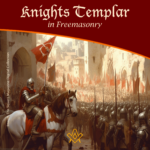 Knights Templar in Freemasonry Uncover the Mysteries of the Knights Templar in Freemasonry! Delve into the intriguing world where chivalry and symbolism intertwine. Discover the captivating rituals and ancient secrets behind the Knights Templar Masonic Orders. Explore the historical connection and delve into the enigmatic narratives that continue to fascinate enthusiasts today. Unveil the hidden truths now! |
 The Royal Arch stands as the rainbow of promise in the Ritual; it stands as the promise of the resurrection; of that which was lost and that it shall be recovered. The question arises as to whether the Master's Word was originally communicated in the Third Degree? On this point there is some diversity of opinion. Originally published in 1915, this insight into the Fourth Degree – the Holy Royal Arch – is as relevant today as it was over 100 years ago. |
 Unveiling the Mysteries of Druidism: Discover the Intriguing Connection with Freemasonry. Explore the ancient spiritual practice of Druidism and its fascinating ties to the enigmatic world of Freemasonry. Delve into the shared symbolism and rituals that have captivated minds for centuries. Unlock the secrets of these intertwined traditions today! |
 Uncover the legacy of freestone masons and their pivotal role in crafting medieval cathedrals. Discover the artistry behind their techniques, the hierarchy within their craft, and the enduring impact of their intricate carvings. A deep dive into the world of these master craftsmen awaits you! |
 Unearth the intriguing journey from Vincha Culture to Freemasonry. Discover how ancient building methods intertwine with modern Masonic philosophies. This exploration will shed light on the fascinating link between the Serbian term "shestarenye" and the symbolic significance of the compass in Freemasonry. |
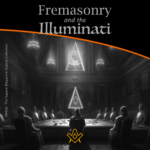 Freemasonry and the Illuminati Unravel the enigmatic world of Freemasonry and the Illuminati in our latest exposé. Dive into centuries-old mysteries, debunk conspiracy theories, and discover the truth behind these elusive societies. Are they puppet masters or mere myths? Join us as we dissect history and fact from fiction. |
 The Île des Templiers, or “Island of the Templars” lies within a leafy park in Paris. The execution site of Jacques du Molay, the last Grand Master of the Knights’ Templar bears a plaque with the epitaph ‘A cet endroit / Jacques de Molay / Dernier grand maître / de l'ordre du temple / a été brûlé le 18 Mars 1314’ (‘In this location / Jacques de Molay / Last grand master / of the order of the temple / was burned on 18 March 1314’) |
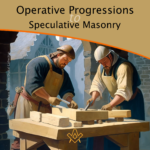 Operative Progressions to Speculative Masonry Both Operative and Speculative Masonry are an important part of the modern fraternity of Freemasonry, which combines elements of both traditions. Today, Freemasonry is a fraternity that is open to men of good character, who are interested in personal development and in making a positive contribution to their communities. |
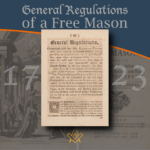 General Regulations of a Free Mason, 1723 General Regulations of a Free Mason as contained in Anderson's Constitutions of the Freemasons, published 1723. the Regulations are of great historical interest. Compiled by George Payne, the second Grand Master of the Premier Grand Lodge of England, they were printed in 1722/3, thus published just over five years after the formation of the Grand Lodge 1717. |
 The Genesis of the 1723 Book of Constitutions 2023, marks the three hundredth anniversary of the publication of the first printed Book of Constitutions of the Grand Lodge formally established in London two years previously. This is an anniversary whose significance extends beyond freemasonry. A paper by Andrew Prescott |
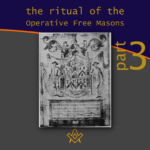 The Ritual of the Operative Free Masons - P3 Existing Operative Free Masons. The ritual I am about to refer, is that of "The Worshipful Society of Free Masons, Rough Masons, Wallers, Slaters, Paviors, Plaisterers, and Bricklayers." By Thomas Carr, M.D., P. M. Honorary Member of the Guild of Operative Free Masons |
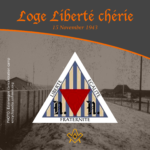 Liberté chérie was a Masonic Lodge founded in 1943 by Belgian Resistance fighters and other political prisoners at Esterwegen concentration camp. It was one of the few lodges of Freemasons founded within a Nazi concentration camp during the Second World War. |
 The Ritual of the Operative Free Masons - P2 If anyone doubts the fact that the formation of Speculative Free Masonry was due to and based upon Operative Free Masonry, it is quite easy to convince him of his error if he will only study the first Book of Constitutions. By Thomas Carr, M.D., P. M. Honorary Member of the Guild of Operative Free Masons |
 In 1881, Freemasonry rose from the ashes of a fire in the mining town of Kokomo, Summit County, Colorado. Corinthian Lodge No. 42, along with Kokomo, no longer exists but it holds the record of having been – at an elevation of 10,618 feet – the highest Masonic Lodge in the USA. |
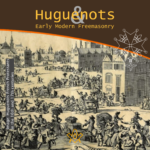 The Huguenots and Early Modern Freemasonry The Huguenots influence in the development of early modern Freemasonry at the time of the formation of the Grand Lodge in London around 1717 / 1723. |
 November is a month of reflection – perhaps due to the fact that we are getting close to the years' end – but also because Remembrance / Armistice Day (11 November) is a significant date in most countries' diaries. |
 Speculative Freemasonry, as practise by Grand Lodge of England, was officially born just over three hundred years ago, is today an international organisation, counting over six million members. It has been subjected to persecution, suppression, and abolition throughout its history. In its infancy, only a couple of decades after its official birth, it had already become a target. |
 The Ritual of the Operative Free Masons - P1 The original paper was written, first, to prove that Speculative Free Masonry was derived from Operative Free Masonry; second, to give some account of the Operative Free Masons, of their Ritual, and of their customs. By Thomas Carr, M.D., P. M. Honorary Member of the Guild of Operative Free Masons |
 American Fraternalism in the 19th and Early 20th Centuries The late 19th and early 20th centuries in the United States has been called the "Golden Age of Fraternalism." How did this come about and why was the idea of joining a fraternal organization so popular? We will explore this question and examine the regalia used by many fraternal organizations in this period. |
 Societas Draconistarum, meaning "Society of the Dragonists"– was a chivalric Order for selected nobility, founded in 1408 by Sigismund von Luxembourg, who through marriage became the King of Hungary (1387–1437) and later Holy Roman Emperor. The Order was fashioned after the military orders of the Crusades, requiring its initiates to defend the cross and fight the enemies of Christianity, in particular the Ottoman Empire. |
 The Perjured Free Mason Detected Was Samuel Prichard a perjured individual, or simply a misguided Freemason? Prichard's book "Free Masonry Dissected" published in 1730, is now used by many Masonic historians as a source of reference with regards to the introduction of the third degree into the Craft. But at the time it was published in 1730, it was not so well received by members of the Grand Lodge of England. |
 17th century and the Holy Royal Arch This article focuses on a period of transition between a point in time when we can safely and historically identify the first formation of what could be called as the ‘Royal Arch’ and the historical events that have preceded it. |
 Most Freemasons have heard the terms 'Operative' and 'Speculative' Masons, and this article helps to understand the difference: |
 Roberts' Constitutions of Freemasonry 1722 Published a year before Anderson's Constitutions, The Old Constitutions Belonging to the Ancient and Honourable SOCIETY OF Free and Accepted MASONS. Originally printed in London England; Sold by J. Roberts, in Warwick-Lane, MDCCXXII.(1722) |
 From 'Songs of religion and life', 1876 by John Stuart Blackie (1809-1895) |
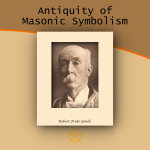 On the Antiquity of Masonic Symbolism Is the Symbolism of Masonry an inheritance derived from the old Masons who flourished before the era of the Grand Lodges (1717); or has it been borrowed from the Rosicrucians or others, after 1717? |
 Mason's Marks – from Egypt to Europe? Mason's marks have been a source of intrigue, not only to Freemasons but to historians and archaeologists. The use of simple pictograms have been employed for millennia by artisans to identify their work. But where did they originate and why? |
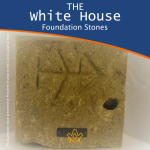 The White House Foundation Stones Further to the articles in our series on the history of the stone masons, we have a rather intriguing addition. During the 1950's renovation of the White House, President Truman retrieved more than 100 stone blocks with stonemasons marks. |
 What the Goose and Gridiron Tavern is in the ancient annals of London Freemasonry, The Green Dragon Tavern is to the memories of the Free-mason, of Boston and New England. |
 Auschwitz concentration camp: video photo article taken in 2013 |
 There are two things of importance happening this day - 27 January |
 Two approaches regarding the understanding of Freemasonry |
 Masonic Research in England c1930 An article which appeared in an American Masonic magazine, c1930 and which was reproduced in England, provoking a little controversy. |
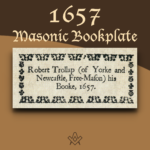 Masonic bookplates the ‘Brethren’s spiritual coats of arms and marks’ |
 The Unlawful Societies Act of 1799 Rebellious Freemasons and the 21st century |
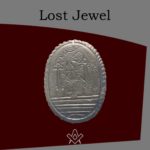 In 1912, Sarah Dowd of Dromore, Ireland, found a Masonic jewel dated 1517 - a date two hundred years before the establishment of Grand Lodge... |
 Freemasonry and Fascist Regime Interesting speech by the famous historian Prof. Aldo A. Mola, who links the fascist regime with the Masonic Associations. |
 Was famous Russian poet Alexander Pushkin a Freemason? And if so, was he a member of the lodge ‘for which all the lodges in Russia were destroyed’? |
 The Importance of Masonic Research Why is accurate - or authentic - Masonic research so important? The importance of making a daily advancement in Masonic knowledge is something that The Square is passionate about promoting. |
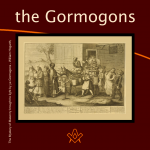 The Antient Noble Order of the Gormogons had a brief existence in the eighteenth century; they left few records or accomplishments, |
masonic knowledge
to be a better citizen of the world
share the square with two brothers

click image to open email app on mobile device






